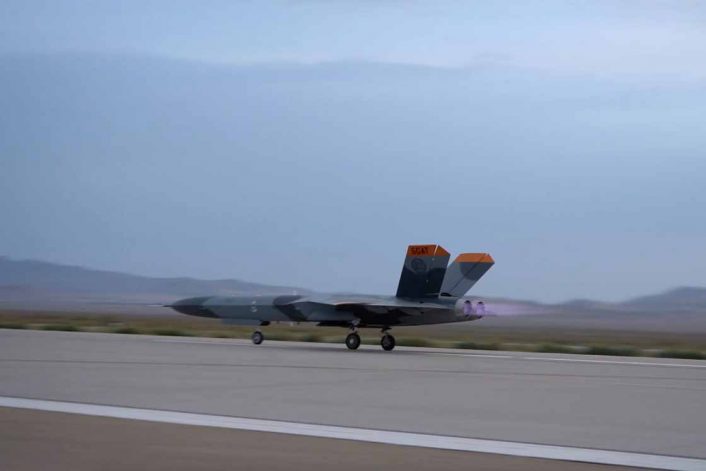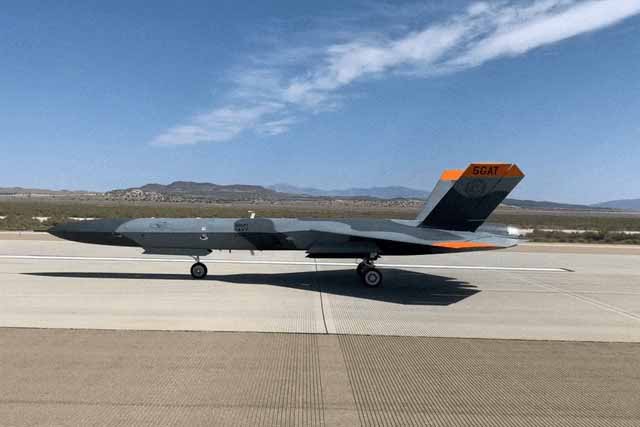5GAT ready for first flight.
According to the U.S. Department of Defense the 5th generation aerial target drone is to make its maiden flight later this month. The first flight is scheduled to take place at the Dugway Proving Ground in Utah. Although the test program suffered from delays due to COVID-19, the ground tests were successfully completed at the Michael Army Airfield on Sep. 18, 2020.
The test program also included verification of milestones required for safe execution of landings and take-offs: as part of the preparation for the maiden flight, the first prototype conducted 24 taxi tests, 15 low-speed and 9 high speed), in six days.
As the threats environment evolves, USAF needs a target drone that can represent the fifth generation threats; low-observable and low-cost at the same time. The 5GAT Drone, as it is referred to “is designed to enable air-to-air and surface-to-air platform and weapons test and evaluation, pilot and ground-force training, and the development of tactics, techniques and procedures against a fifth-generation threat,” the defense.gov release reads.
Further tests will be aimed at verifying the combat-credibility of the system in scenarios involving an actual threat. Robert Behler, the director, operational test and evaluation said, as quoted in the DoD’s release, that “Right now, we lack a test platform that truly represents fifth-generation air capabilities.”
The 5GAT project is pursued by Sierra Technical Services (prime contractor), Fast Optimal Engineering (responsible for subsystems) and 5D Systems (delivering the Software). What’s interesting, 5GAT is to recycle the components cannibalized from decommissioned military aircraft.
Notably, the 5GAT platform also features diamond-shaped wings and intakes. The intakes’ snaking design hides the fans of the engines which limits the RCS (Radar Cross Section) significantly.

According to The War Zone, the 5GAT would have a unit-price of about 10 million dollars and use a pair of T-38 engines (J85) ; Aviation Week, reported that the platform also uses some components of the F-5 and F/A-18 jets. All of those factors make the cost of the platform that looks relatively modern, quite reasonable. For the sake of comparison, a single F-35 airframe costs around 100 Million USD. Even though the F-35 should be employed in the aggressor role during the Red Flag exercise soo, a live-firing scenario is the main domain where the 5GAT would be very useful for the sake of conducting realistic training. USAF is no longer the sole user of 5th generation (or similar) jets, with China and Russia creating their own designs too.
FlightGlobal quoted the Sierra Technical Services saying that 5GAT could become an attritable loyal wingman – so cheap that the loss of such a platform would be negligible. Thus, the UAVs such as the 5GAT could carry out the tasks that may create dangers for the more expensive platforms, such as the F-35 or the XQ-58A.
5GAT is to begin its flight test program in late October. The scope of the program is to cover the subsystems, auto-land and auto-takeoff functions. The further tests would have an objective of expanding the envelope of the platform.
Performance-wise, the manufacturer expects the 5GAT to be capable of reaching high subsonic speeds. The intake inlet design has been created to match that requirement. However, no analysis of the design in the supersonic envelope has been done. What’s interesting, the manufacturer claims that the g-load limits for the aircraft range from -2 to +7.5. Nonetheless, the 5GAT lacks the ability to sustain these values. This is due to the limited thrust of the J85 engines used on the airframe.










